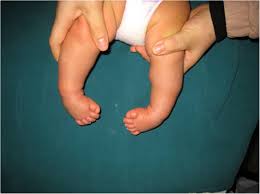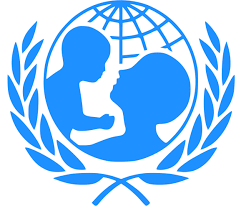
Early treatment key to preventing disability in children with clubfoot – Surgeons
To address preventable disabilities in children with clubfoot in Nigeria, orthopaedic surgeons have called on parents to pursue early treatment for affected infants.
They cautioned against linking the congenital deformity to spiritual attacks or divine retribution, emphasizing that prompt medical intervention ensures complete correction.
The surgeons stated that myths and misconceptions, which prevent many children from receiving treatment, must be discarded if the social stigma and disability associated with the condition are to be mitigated.
Experts indicate that untreated clubfoot leads to lifelong disability, resulting in pain, difficulty in walking, social stigma, and restricted access to education and economic opportunities.
As per the Cleveland Clinic, clubfoot is a congenital condition (present at birth) where a baby’s foot or feet turn inward.
The clinic reports that approximately one in every 1,000 babies is born with clubfoot, making it one of the more prevalent congenital foot deformities.
"Clubfoot occurs due to a problem with your child’s tendons, the tissues that connect muscle to bone.
"The tendons in your baby’s leg and foot are shorter and tighter than they should be, causing the foot to twist. About half of the babies with clubfoot have an issue with both feet," the clinic explained.
According to a non-governmental organization, Nigeria Clubfoot Treatment Partners, no fewer than 10,000 children are born with clubfoot in Nigeria each year.
Currently, the cause of clubfoot remains unknown (idiopathic). However, experts suggest it may result from a combination of genetic factors and environmental influences, including a family history of clubfoot, smoking, alcohol consumption, and the use of certain medications during pregnancy.
The orthopaedic surgeons who spoke exclusively affirmed that clubfoot deformity is treatable, asserting that children who receive early treatment experience improved health outcomes.
Mike Ogirima, a Professor of Orthopaedic and Trauma Surgery, stated that congenital clubfoot, also referred to as idiopathic clubfoot, is a prevalent congenital defect of the extremities and represents the most common form of clubfoot.
Ogirima, who previously served as President of the Nigerian Medical Association, indicated that the etiology of idiopathic clubfoot remains unknown.
Nevertheless, he emphasized that clubfoot, known medically as talipes equinovarus, can be effectively managed through physical manipulations, highlighting that surgical intervention is no longer deemed necessary since the adoption of this manipulative treatment approach.
Ogirima, who also holds the position of Provost at the College of Health Sciences, Federal University Lokoja, Kogi State, remarked, "In the orthopaedic ward, the incidence is one in 10,000 live births globally. We categorize clubfoot into two types.
"The first is the congenital type, which is recognized as the most prevalent congenital abnormality of the foot's extremities that is present at birth.
"This condition is also termed idiopathic clubfoot due to the lack of known causative factors, although numerous associated factors have been identified. The second type, which develops postnatally, is referred to as secondary or acquired clubfoot, often resulting from foot infections, trauma, or poliomyelitis."
The orthopaedic surgeon noted that idiopathic clubfoot constitutes approximately 80 to 90 percent of the cases encountered by bone specialists, adding that it may also have a hereditary component.
He pointed out that while the acquired form of clubfoot can be corrected, the treatment must be tailored to the underlying cause of the deformity, such as an injury or infection.
In 2020, the World Health Organization released guidelines aimed at enhancing the quality of care for newborns in healthcare settings, advocating for the assessment and management of all newborns for congenital conditions.
Providing insights into the management of clubfoot and the importance of early referral to orthopaedic surgeons, the academic stated, "Historically, many procedures were performed that were often unnecessary, especially now that there is a surgical operation.
"Treatment is more manageable from the very first day of life, and the most prevalent option we currently provide, which can achieve up to a 95 percent correction rate for this idiopathic form of clubfoot, is known as the Ponseti method.
"Thus, we adhere to the Ponseti treatment protocol, which entails the sequential manipulation of all aspects of clubfoot. Following four to five weeks of manipulations, one should be able to achieve correction, even in severe cases."
Ogirima voiced his concerns that, despite the growing awareness of clubfoot among orthopedic surgeons who are now highlighting the condition, it remains linked to social stigma and misconceptions within the country.
He noted that this often results in delayed treatment for the child, emphasizing that such delays can escalate treatment costs, potentially necessitating surgical interventions.
The orthopedic surgeon remarked, "A significant amount of mysticism has been attributed to clubfoot in Nigeria, but we have worked to debunk these myths. There is considerable social stigma tied to this condition.
"When a child is born with clubfoot, their parents may feel immense guilt, believing that perhaps God is punishing them for their past transgressions.
"The notion of witchcraft also persists, which is why, even today, some parents are reluctant to come forward with their children who have clubfoot.
"Historically, traditional bone setters have been sought after in our communities. People inquire whether the deformities are a curse from a demigod or a punishment from God inflicted upon the family or the child's parents."
He stated that these are unfounded beliefs that continue to prevent many parents from seeking treatment for their children with clubfoot.
"This is why, each year, numerous non-governmental organizations fund their treatment and visit hospitals to train individuals who can identify the condition at birth," he added.
The professor further noted that they still encounter adults presenting with deformed feet, sometimes affecting both feet.
Currently, after initial manipulation, the condition may require surgical intervention for correction due to a late presentation. Late presentation is linked to increased treatment costs.
"Therefore, the sooner a child with clubfoot is referred to an orthopaedic surgeon, the more effective, economical, and less burdensome the treatment will be," he remarked.
Ogirima urged expectant mothers to prevent folic acid deficiency and refrain from alcohol consumption, cautioning that alcohol poses significant risks during pregnancy and may result in birth defects.
"It can impact the developing fetus. Additionally, they should steer clear of radiation exposure and refrain from using non-prescribed medications during the first trimester of pregnancy. Even Paracetamol should be minimized, as the effects of various drugs on fetal development are largely unknown, apart from the associations we have observed," he advised.
Furthermore, Dr. Peace Amaraegbulam, a Consultant Orthopaedic Surgeon and President of Nigeria Clubfoot Treatment Partners, characterized Clubfoot as the most prevalent musculoskeletal birth defect, resulting in the feet turning inwards and upwards.
She stated, "In Nigeria, more than 10,000 children are born with this condition annually, and without appropriate treatment, walking becomes exceedingly challenging and painful as children are forced to walk on the sides of their feet.
"This situation leads to discrimination, social stigma, and a loss of economic opportunities.




